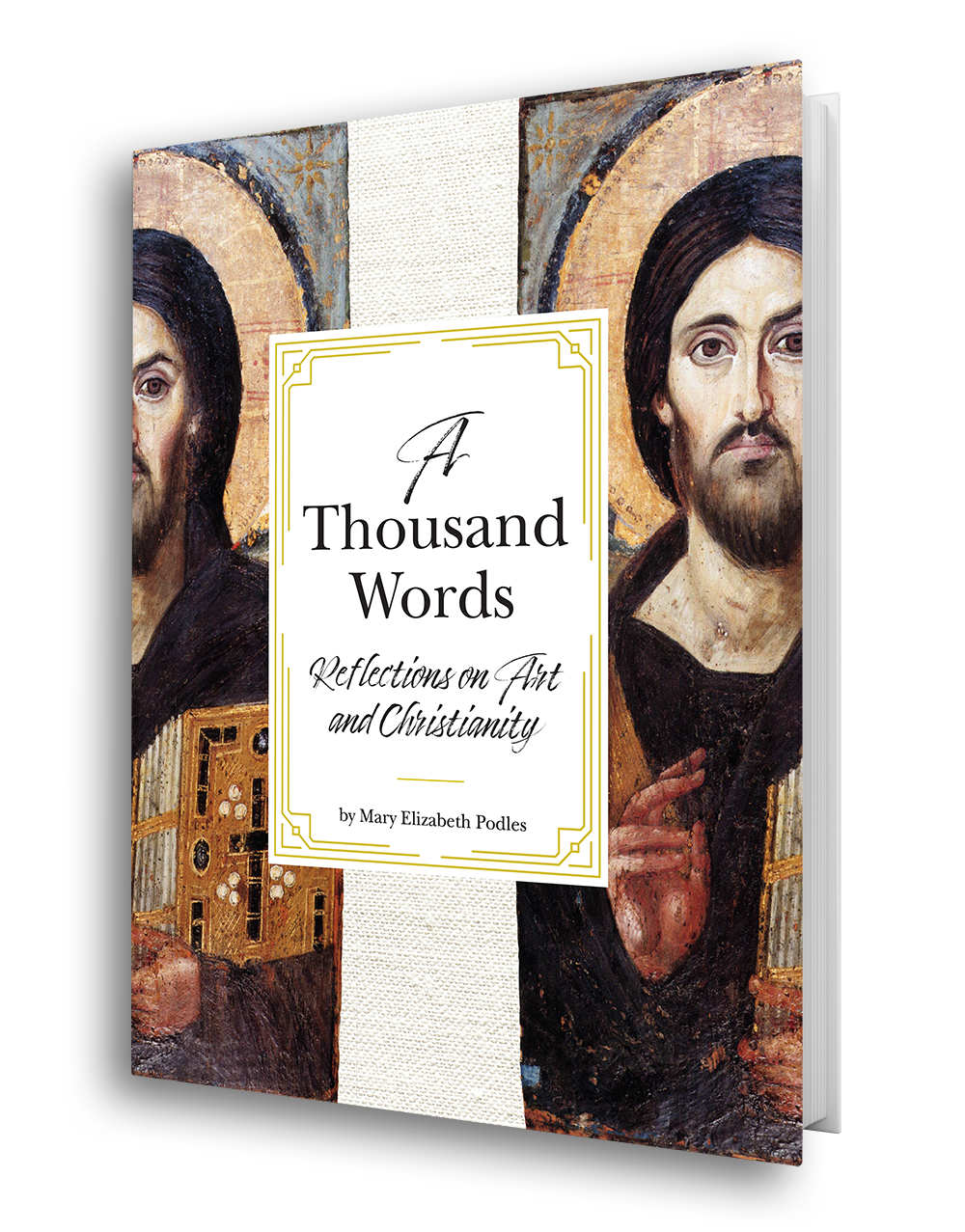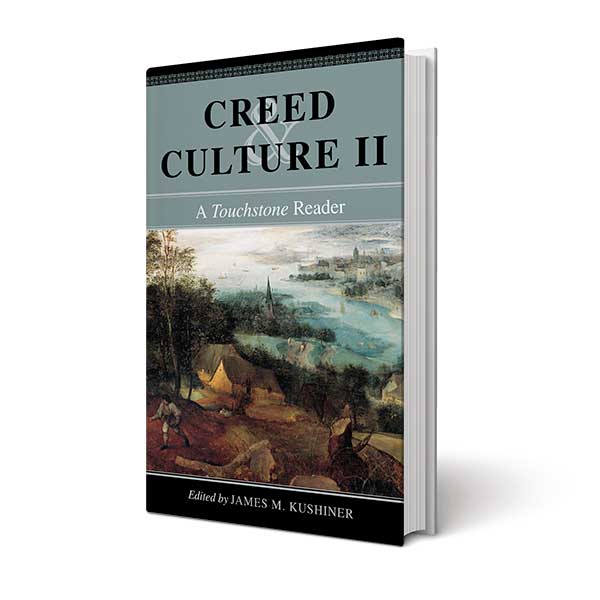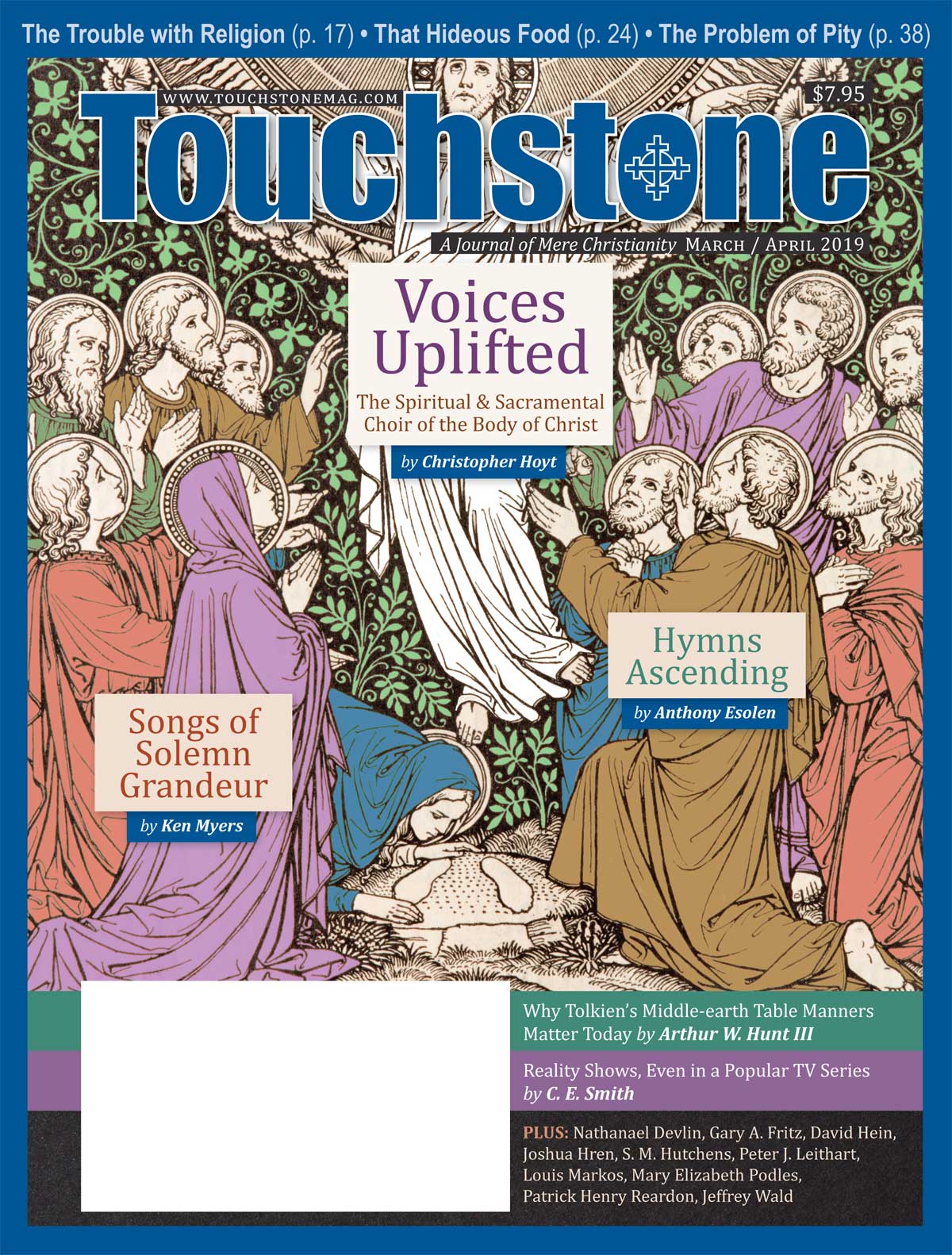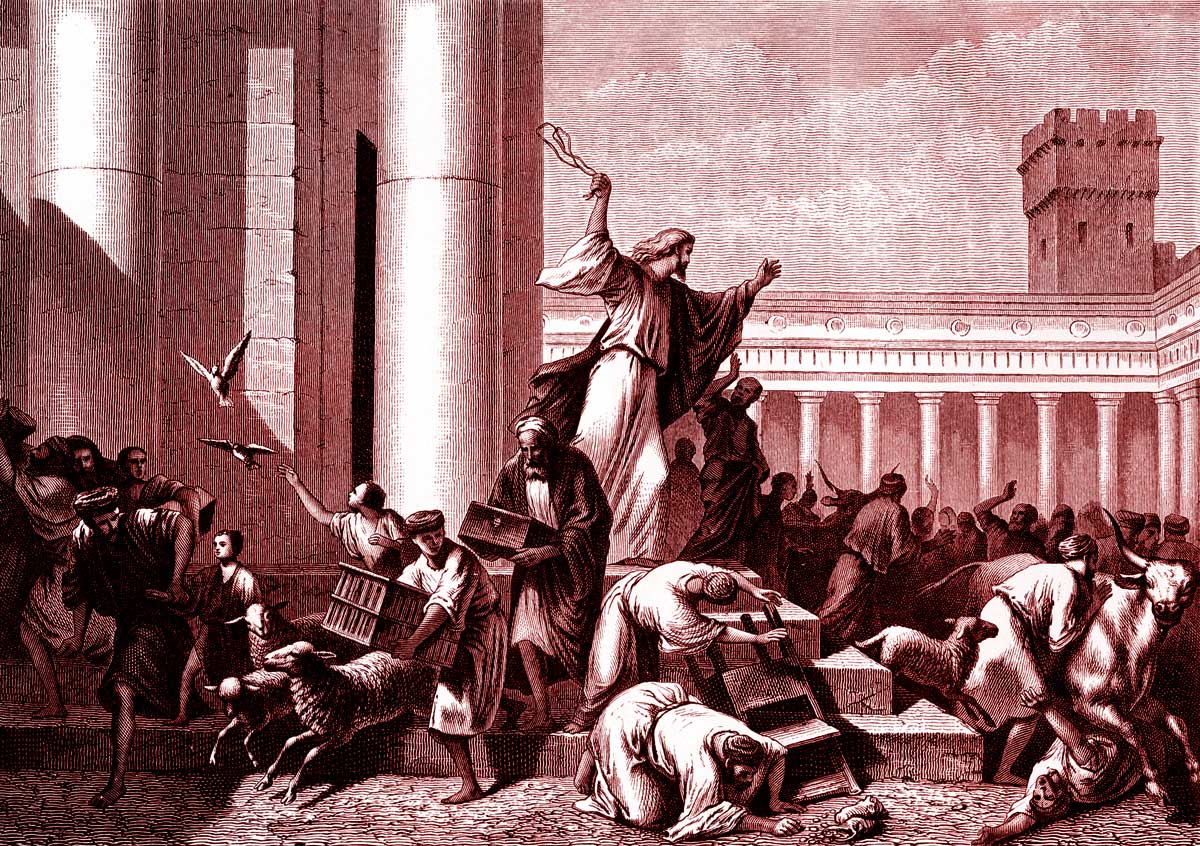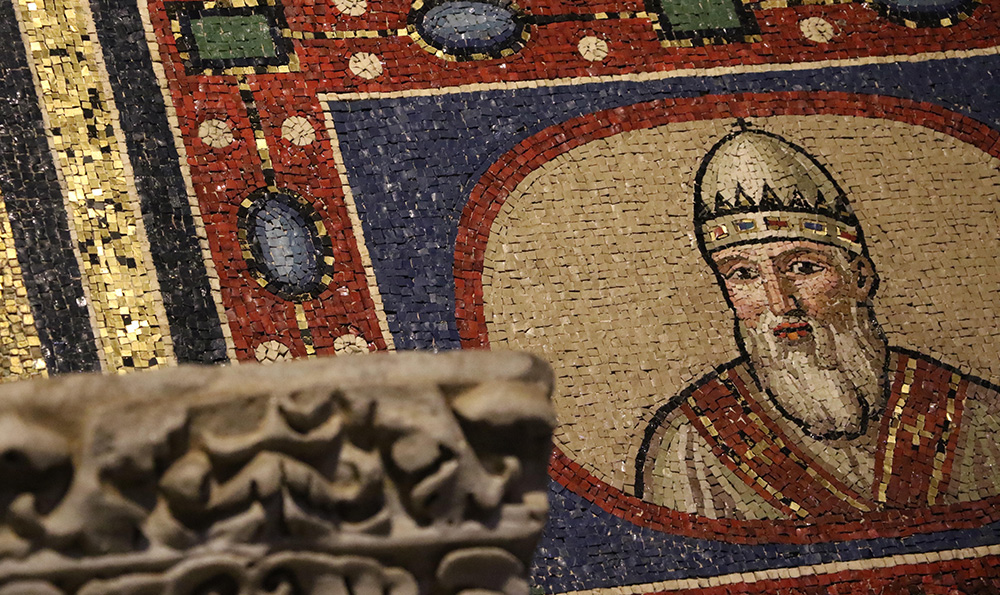Feature
Voices Uplifted
The Spiritual & Sacramental Choir of the Body of Christ
by Christopher Hoyt
For the modern English speaker, the words "wind," "breath," and "spirit" each conjure a different sort of mental image. "Wind" may summon up the picture of tree limbs swaying in the breeze. For "breath," one might imagine a windowpane fogged by exhalation or a diagram of human lungs. "Spirit" conveys still another sort of idea: Scrooge's midnight visitors or a genie from a lamp. In our minds, these three—wind, breath, and spirit—are sharply differentiated ideas that do not overlap much with one another, and our evolving English language has assigned a separate term to each.
But in the biblical languages of Hebrew and Greek it was not so. The single Greek word pneuma or Hebrew word ruach embraced all three of these concepts: the currents of air that travel to and fro across the earth, the respirations of the body, and the life that transcends the flesh. The vocabulary of the biblical authors thus furnished a single, composite word-idea that our language has divided into three. One can see this in our English translations of John 3:8, which often supply two different renderings of the Greek word pneuma: "The wind [pneuma] blows where it wishes, and you hear the sound of it, but cannot tell where it comes from and where it goes. So is everyone who is born of the Spirit [pneuma]" (NKJV).
As in language, so in thought: the clean separation between the ideas of wind and breath and spirit that our language imposes upon us did not exist for thinkers in the biblical era. To them, clouds drifting on a breeze, a man puffing from exercise, and the "light of the eyes" were all manifestations of the same thing, the ruach or the pneuma. Each of those particular instances participated in a larger, composite idea or "ancient unity," as Owen Barfield named it.
Tuning Man's Whole Being to God
Singing, then, must have seemed a different sort of activity to ancient thinkers than it does to us now. Singing presumes breathing, so any singer in the ancient world would have been—to their way of thinking—literally "full of the spirit." This elucidates a parallelism in the Apostle Paul's words: "be filled with the Spirit, speaking to one another in psalms and hymns and spiritual songs, singing and making melody in your heart to the Lord" (Eph. 5:18b–19).
When one sings, one is resonated by the pneuma, the wind-breath-spirit. One becomes an instrument very much like a flute or an oboe. The vibrations produced by the pneuma do not merely involve lungs and larynx. The entire human body serves as a resonance chamber for the voice, in much the same way as the body and bell of a clarinet enable its speech. And when one is singing in worship, this resonance extends beyond mere physical vibrations and into the metaphysical world as well. I hope that every reader has experienced the reverberations of heart and mind that accompany fervent congregational singing. For any who have had such an experience, it is not hard to perceive a hymn as an act of obedience to Jesus' command, "You shall love the Lord your God with all your heart, with all your soul, with all your mind, and with all your strength." Pious singing unites all the human faculties in a single act, tuning man's whole being to God.
This insight did not escape the ancients. Athanasius mentions it in his letter to Marcellinus:
When, therefore, the Psalms are chanted, it is not from any mere desire for sweet music, but as the outward expression of the inward harmony obtaining in the soul, because such harmonious recitation is in itself the index of a peaceful and well-ordered heart. To praise God tunefully upon an instrument, such as well-tuned cymbals, cithara, or ten-stringed psaltery is, as we know, an outward token that the members of the body and the thoughts of the heart are, like the instruments themselves, in proper order and control, all of them together living and moving by the Spirit's cry and breath. (The Life of Antony and the Letter to Marcellinus, translated by Robert C. Gregg, Paulist Press, 1980)
One can hear in Athanasius an echo of Paul's exhortation, "present your bodies a living sacrifice, holy, acceptable to God, which is your reasonable service. And do not be conformed to this world, but be transformed by the renewing of your mind" (Rom. 12:1–2). Worshiping in song is a way of transforming oneself into that living sacrifice; the aptly named "offertory" sung in church services today is an offering of the worshipers' own selves. Such a parallel between sacrifice and music appears in the temple worship of the Old Testament. Second Chronicles 23:18, for example, mentions that King David specifically paired music with the burnt offerings of the tabernacle; strains of melody rose heavenward along with the smoke of the burning animal.
Doubly Sacramental
The reader will now have some sense of what I mean when I say that music is sacramental. It is sacramental in a double sense. The first and more obvious sense is the classic definition of a sacrament: "an outward, visible sign of an inward, spiritual grace," which in this case might be paraphrased to "an embodied, audible sign of an inward, spiritual grace." One catches that sense in Athanasius's quote above. But there are also intimations in the Scriptures that music is sacramental in a second sense: in addition to signifying spiritual realities, it actually intermingles and interacts with them.
Consider one of the most touted examples, David playing his harp to calm King Saul. First Samuel 16 records that when David played, the distressing spirit from the Lord left Saul. Jeremy Begbie has noted that the reformers Martin Luther, John Calvin, and Ulrich Zwingli all commented on this biblical passage. Each reformer's perspective on the passage parallels his Eucharistic theology; how efficacious was David's harp playing, really? Did the music actually cause the distressing spirit to leave Saul, or was it merely an accompanying incident?
Other Bible stories provoke similar questions. In 2 Kings 3, the monarchs Jehoshaphat and Jehoram approach the prophet Elisha, seeking a prophecy from the Lord. Elisha calls for a musician. "Then it happened," the text says, "when the musician played, that the hand of the Lord came upon [Elisha]." In the account of the dedication of Solomon's temple (2 Chronicles 5), divine action is also associated with music:
[I]ndeed it came to pass, when the trumpeters and singers were as one, to make one sound to be heard in praising and thanking the Lord, and when they lifted up their voice with the trumpets and cymbals and instruments of music, and praised the Lord, saying: "For he is good, / For his mercy endures forever," that the house, the house of the Lord, was filled with a cloud, so that the priests could not continue ministering because of the cloud; for the glory of the Lord filled the house of God.
I do not mean to suggest that holy music is a tool for manipulating God into action, which would be an idolatrous notion. To say that music is sacramental is not to say that it is magic, a spell that irresistibly conjures God or the spirits on our behalf. But passages such as these suggest that music is not easily disentangled from the world of the transcendent. Metaphysical realities have their counterpart in physical vibrations. Breath and breeze are not easily divorced from spirit.
An Image of the Body of Christ
It is perhaps not surprising, then, that the physical nature of singing should mirror certain spiritual realities. The unity of the Church, for example, finds its counterpart in congregational song. What could be a more apt figure of "many members in one body" than when unique and disparate voices become one in song? A group of people that is singing well shares a common pace of declamation, a common set of notes, and a common vocal timbre; through these they unite. Yet this unity does not eradicate the individual; each voice retains its own distinctive quality as it contributes to the whole. Indeed, far from being obliterated by the ensemble, each voice becomes acoustically greater than it would have been alone; sympathetic resonance between sound waves causes individual voices to augment and enhance one another.
On a few occasions, when I have been in a choir that was singing a chord perfectly in tune, I have heard high, shimmery pitches sounding above the singers' voices. Many readers will already be familiar with these "overtones" or "harmonics," which are the result of sympathetic resonance between sound waves. I find it especially delightful that God has woven such a potent analogue into the very properties of sound. What better image of the body of Christ, in which the whole is somehow greater than the sum of its parts? What could be more reminiscent of the invisible, heavenly choir than unseen voices that join with ours in our moment of perfect concord? (Note that at the dedication of Solomon's temple, it was when the singers and instrumentalists were "as one" that the glory cloud of the Lord appeared in the temple.)
Unity & Memory Across Generations
And it is not only our pew-mates to whom we are united through our singing. When we share the song of a previous generation, we invoke their witness. Old songs are a manifestation of cultural memory, the heirloom of a common heritage; through them our forefathers speak to us, and through them we testify to our yet-unborn descendants. Past, present, and future converse through singing. As Thomas Gill put it in his hymn:
We come unto our fathers' God;
Their Rock is our salvation;
Th'eternal arms, their dear abode,
We make our habitation;
We bring thee, Lord, the praise they brought;
We seek thee as thy saints have sought
In ev'ry generation. . . .Their joy unto their Lord we bring;
Their song to us descendeth;
The Spirit who in them did sing
To us his music lendeth.
His song in them, in us, is one;
We raise it high, we send it on,
The song that never endeth.
God himself speaks explicitly about this role of music in the book of Deuteronomy, as the children of Israel are about to enter the Promised Land:
Now therefore, write down this song for yourselves, and teach it to the children of Israel; put it in their mouths, that this song may be a witness for me against the children of Israel. When I have brought them to the land flowing with milk and honey, of which I swore to their fathers, and they have eaten and filled themselves and grown fat, then they will turn to other gods and serve them; and they will provoke me and break my covenant. Then it shall be, when many evils and troubles have come upon them, that this song will testify against them as a witness; for it will not be forgotten in the mouths of their descendants, for I know the inclination of their behavior today, even before I have brought them to the land of which I swore to give them. (Deut. 31:19–21)
If anyone desires evidence of the indelible stamp that music leaves upon memory, I recommend singing Christmas carols at a nursing home. When I was an elementary school student, our class would sing every year for the old folks at the nearby rest home. When we filed into the nursing home cafeteria, many of the residents seemed unaware of us; their eyes glazed and their chins drooped onto their chests as they sat. Some could no longer recognize their own children or remember their own spouses' names. But as soon as we would strike up with "Joy to the World!" or "Silent Night," they were transformed. Heads lifted, spark came back into eyes, eager smiles blossomed, and the old folks would chant the words along with us. The old songs are the last thing to go.
Singing in the Mold of Love
In addition to bridging temporal gaps, hymns have also (happily) begun to bridge the gaps between denominations, forging links between parts of the Church that are institutionally estranged. Whether it is Roman Catholics singing Luther's Ein' feste Burg ("A Mighty Fortress Is Our God") or Reformed churches singing Aquinas's Adoro te devote ("Humbly I Adore Thee"), certain hymns have become a token of ecclesiastical unity, testifying that these many members are still one body in Christ.
This sacramental manifestation of the one-and-many is reminiscent not only of the Church's unity, but also of the doctrine of the Holy Trinity. It is striking that God, being both singular and several, should have mandated congregational singing, an action that combines plurality and singularity. Corporate singing mimics the love that flows between Father, Son, and Holy Spirit. The duties of a good chorister—listening to others, seeking to enhance their sound, responding to the needs of the group—are also essential to the imitation of Trinitarian love. Oneness and caritas mingle in the sacrament of music as they do in Jesus' high priestly prayer:
I do not pray for these alone, but also for those who will believe in me through their word; that they all may be one, as you, Father, are in me, and I in you; that they also may be one in us, that the world may believe that you sent me. And the glory which you gave me I have given them, that they may be one just as we are one: I in them, and you in me; that they may be made perfect in one, and that the world may know that you have sent me, and have loved them as you have loved me. (John 17:20–23)
Even Paul's scant instructions about church music, both in Colossians and in Ephesians, cast singing in the mold of love. Paul prescribes music as a duty that has both a God-ward and a neighbor-ward direction, and thus alludes to Jesus' summary of the law: "Let the word of Christ dwell in you richly in all wisdom, teaching and admonishing one another in psalms and hymns and spiritual songs, singing with grace in your hearts to the Lord." (Col. 3:16)
Toward a Renaissance of Holy Song
Few human pursuits are so steeped in sacramentality as singing. It comes as no surprise, then, that God has so frequently commanded it in his Word. Even the proportions of Holy Writ suggest its importance; the longest book in the Bible is the Book of Psalms.
It is encouraging that so many Christian scholars and thinkers are once again turning their minds and pens to this disregarded sacrament. One can hope that the renewed interest will not stop at mere abstract thinking and theorizing, but that Christians everywhere will make music to the Lord with heart, soul, mind, and strength. Let us pray that we may see a renaissance of holy song as Christians aspire to music which is theologically rich, full of piety, and superb in its execution. After all, the adage is not merely, "He who sings, prays twice," but "He who sings well, prays twice."
Christopher Hoyt is the author of Under Authority: Practicing Submission in a Rebellious Society (Anglican Liturgy Press, forthcoming). He teaches the humanities at Good Shepherd School (Reformed Episcopal) in Tyler, Texas. He is the general editor of the hymnal The Book of Common Praise/Magnify the Lord, an Adjunct Professor of Sacred Music at Cranmer Theological House (Reformed Episcopal), and the organist/choirmaster at Good Shepherd Church in Tyler.
Share this article with non-subscribers:
https://www.touchstonemag.com/archives/article.php?id=32-02-034-f&readcode=10185
subscription options
Order
Print/Online Subscription
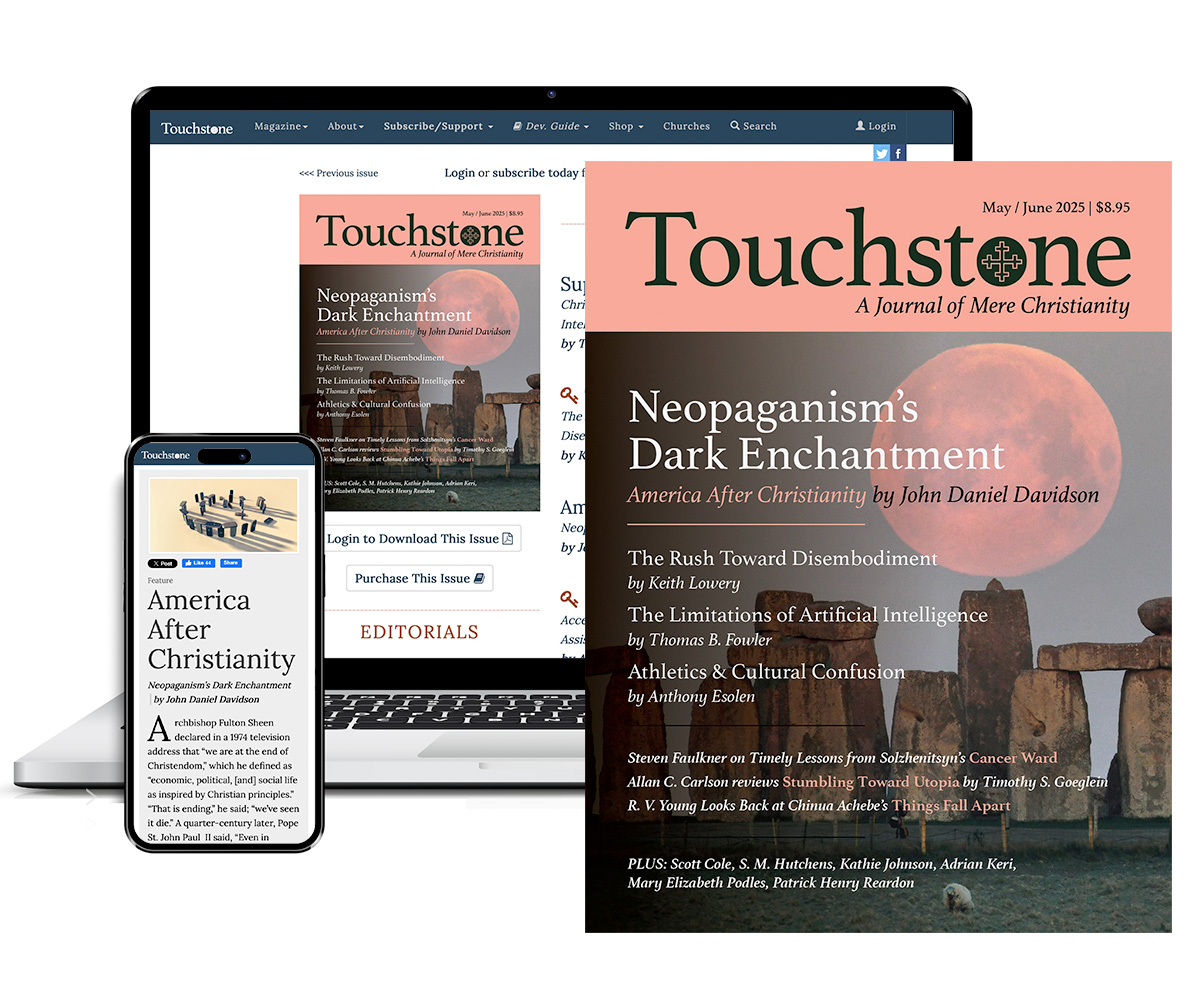
Get six issues (one year) of Touchstone PLUS full online access including pdf downloads for only $39.95. That's only $3.34 per month!
Order
Online Only
Subscription

Get a one-year full-access subscription to the Touchstone online archives for only $19.95. That's only $1.66 per month!
bulk subscriptions
Order Touchstone subscriptions in bulk and save $10 per sub! Each subscription includes 6 issues of Touchstone plus full online access to touchstonemag.com—including archives, videos, and pdf downloads of recent issues for only $29.95 each! Great for churches or study groups.
Transactions will be processed on a secure server.
more on music from the online archives
more from the online archives
calling all readers
Please Donate
"There are magazines worth reading but few worth saving . . . Touchstone is just such a magazine."
—Alice von Hildebrand
"Here we do not concede one square millimeter of territory to falsehood, folly, contemporary sentimentality, or fashion. We speak the truth, and let God be our judge. . . . Touchstone is the one committedly Christian conservative journal."
—Anthony Esolen, Touchstone senior editor



